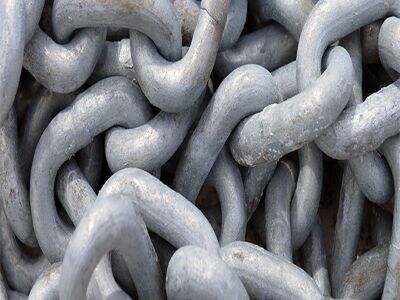Types of shackles explained
The most popular shackle types are anchor, chain, and screw pin shackles. Anchor shackles are ideal for multi-dimensional loads and load angles and have a wider bow shape. Chain bow shackles are for single-leg lifts and have a more of a bow shape. Screw pin shackles Screw pin shackles are convenient for applications that require frequent removal of the pin. Each type of shackle serves its own purpose with its own unique set of characteristics, which is why it’s essential to be clear on the differences between them and select the correct option for your particular application.
Properly sizing and fitting shackles
One of the key elements in using shackles safely and effectively is to make sure you pick the correct size and fit for your application. Shackles are available in a variety of sizes, and weight capacities, so its not always about the load amount you intend to lift. Invie recommends never using a chain and hooks for lifting is smaller or less in weight rating than what you are lifting; this can cause hazardous conditions and accidents. Be sure to refer to the manufacturer's requirements and instructions, as this will help to ensure you are selecting the proper size and weight capacity.
How to safely and properly use a shackle
If you are using shackles, there are a couple of important guidelines you should follow in order to be safe and efficient. The first thing you will need to check is your shackles, always look over your chain hooks for towing using them to ensure they have not been damaged or they aren’t wearing out. Change broken shackles quickly to prevent accidents. Second, ensure that you tighten the bolt Squeeze the pin Or shackle bolt up the load. When fit is loose, the lift can slip below the cup and cause accidents. Shackles should always be used in size and weight appropriate conditions; do not be side loading a shackle; this causes bending stresses that reduce the working load limit of the shackle below its rated capacity. By adhering to these guidelines, you’ll be able to use shackles safely and effectively to keep your lifting operations running smoothly.
Maintenance and care for shackles
Good upkeep and maintenance is key to the life and performance of your shackles. Clean your chain hook lock diligently after each workout to clear them of dirt, debris, or any other agents that promote corrosion. Check the shackles for signs of wear, bending, or distortion and // replace any that appear damaged immediately. Regularly oil moving parts to avoid rust and to operate smoothly. In addition, shackles may last longer when stored dry and clean. You can keep your shackles safe and in working condition for next time by looking after them.
Recommended rules of thumb for shackle load limits
Knowing the weight limitations of your shackles is important for safe lifting. Every shackle can handle a set capacity which shall not be exceeded. Always refer to the manufacturers specifications for the working load limit for your shackles and never exceed this limit. And you also have to consider the angle of the rigging when you determine the load on the shackle. With the increase in such an angle, loads on the shackle will also increase and you need to take that into account to find a shackle of an appropriate size and amount of weight it can carry for you.

